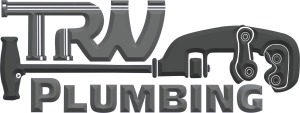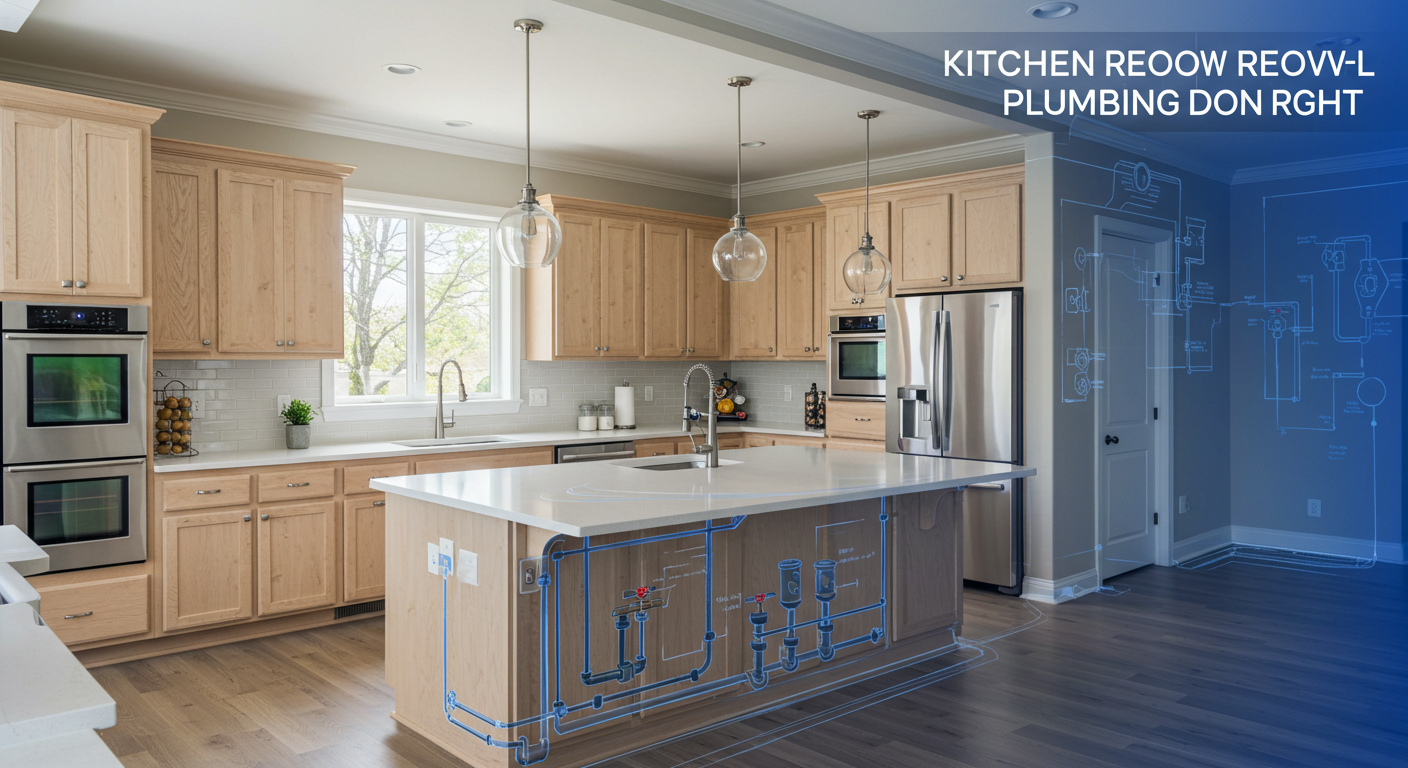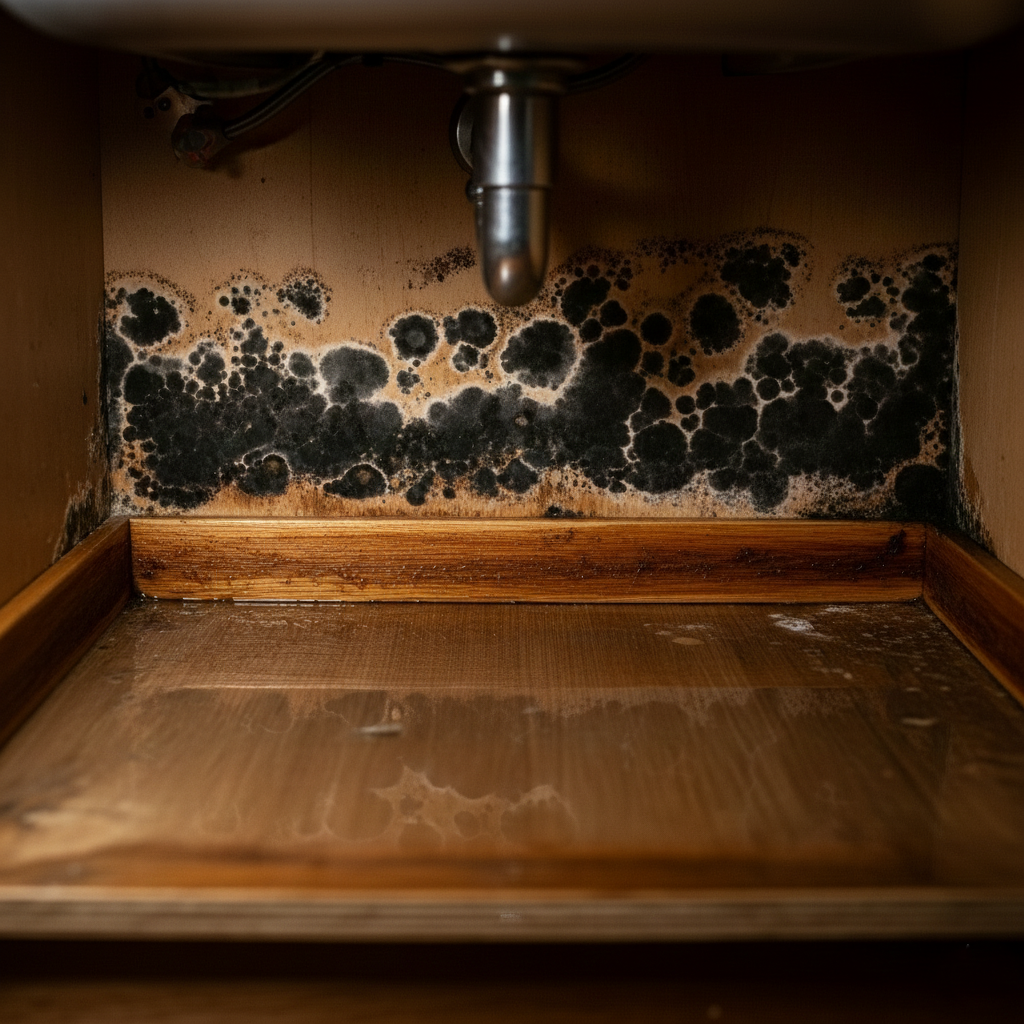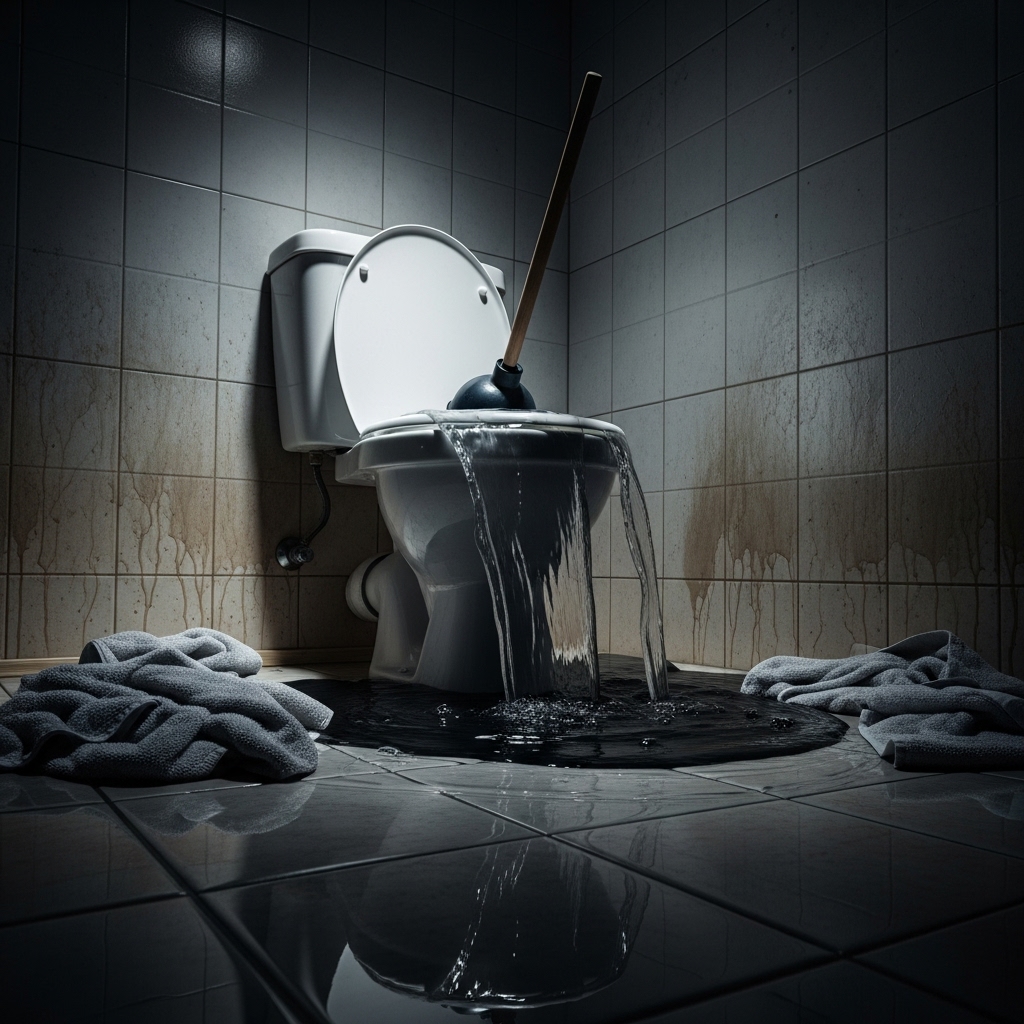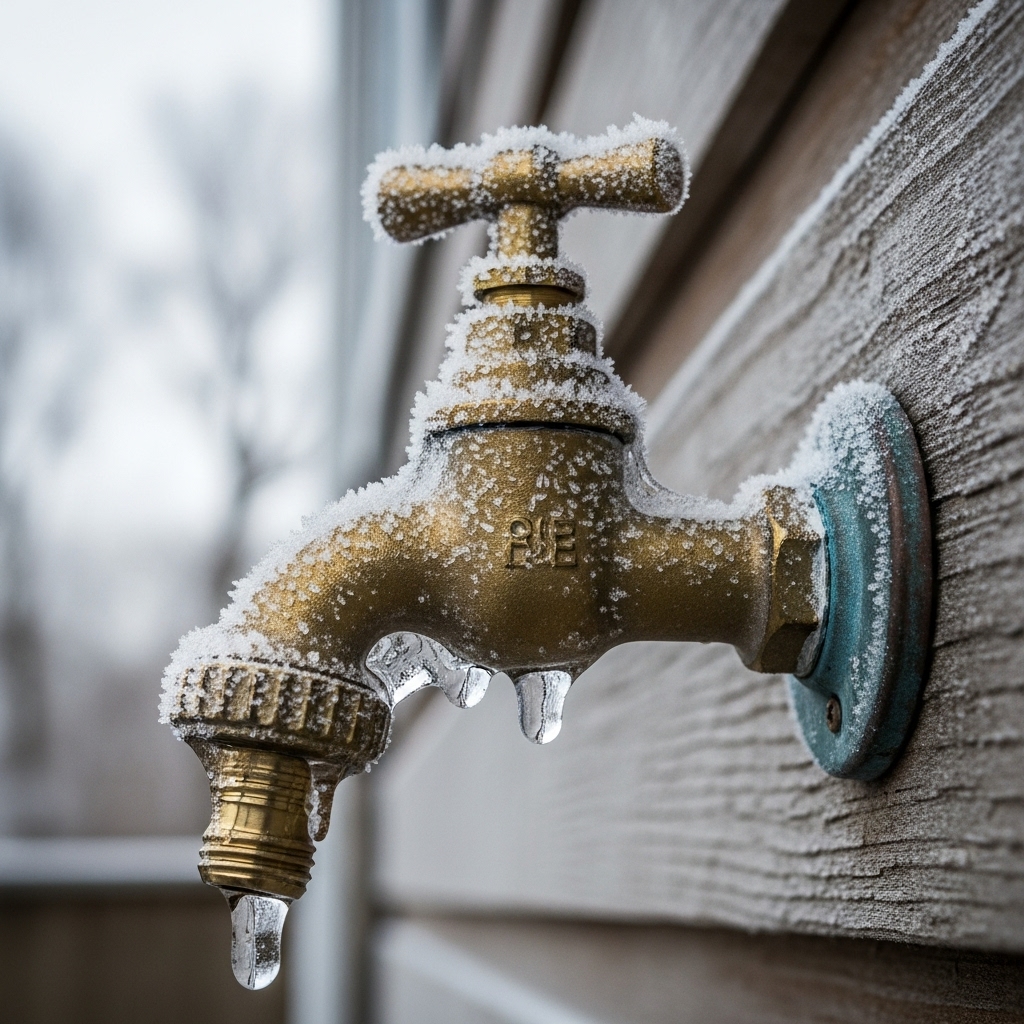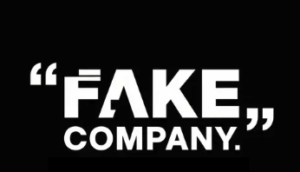Kitchen remodel plumbing might not be the most glamorous part of your renovation, but it’s definitely the most important. Think of it as the hidden foundation that makes everything else work – from your morning coffee routine to hosting dinner parties. Without proper plumbing, even the most beautiful kitchen becomes a frustrating headache.
If you’re planning a kitchen remodel in Twin Falls, you’re joining thousands of homeowners who tackle this project every year. The good news? With the right planning and expert guidance, your plumbing upgrade can be smooth and stress-free. At TRW Plumbing, we’ve helped countless Twin Falls families transform their kitchens, and we’ve learned a thing or two about what works – and what doesn’t.
Why Plumbing Is the Backbone of Your Kitchen Remodel
Your kitchen plumbing does more heavy lifting than you might realize. It’s not just about getting water to your sink – it’s about creating a functional workspace that serves your family for years to come.
Good plumbing affects everything: water pressure for washing dishes, proper drainage to prevent backups, and reliable connections for appliances like dishwashers and ice makers. When done right, you’ll never think about it. When done wrong, you’ll be reminded every single day.
In Twin Falls, we see unique challenges that many other areas don’t face. Many of our beautiful older homes were built with galvanized pipes that are reaching the end of their lifespan. Plus, our naturally hard water can be tough on fixtures and appliances. These plumbing tips for kitchen remodel projects address these local realities head-on.
The value impact is real too. A well-executed kitchen remodel with updated plumbing can increase your home’s value by 15-20%. But cut corners on the plumbing, and you might find yourself dealing with water damage, failed inspections, or costly repairs down the road.
Planning Ahead – How to Avoid Costly Surprises
The biggest mistakes happen before the first pipe is even moved. Smart planning is your best insurance against budget overruns and timeline delays.
First, let’s talk permits. In Twin Falls County, most kitchen remodels require permits if you’re moving plumbing lines or adding new fixtures. Yes, it’s extra paperwork and cost, but it’s also your protection. Permits ensure the work meets current codes and will pass inspection when you sell your home.
The cost of kitchen plumbing remodel varies widely based on your plans. If you’re keeping the same layout and just updating fixtures, budget $1,500-$3,000. Moving plumbing to create an island or completely new layout? You’re looking at $3,000-$8,000 or more. The key variables are how much pipe needs to be relocated and whether you need to access plumbing through finished walls or floors.
Here’s a pro tip from years of Twin Falls remodels: always add 20% to your plumbing budget for surprises. Older homes especially tend to reveal unexpected issues once walls are opened. Maybe the previous owner did some creative DIY work, or you discover that cast iron drain line finally needs replacing.
Timing matters too. In Idaho, many homeowners start kitchen projects in late fall or winter when outdoor activities slow down. Just remember that if you need to shut off water to the house, subfreezing temperatures can complicate the work.
Installing Your Sink the Right Way
Your kitchen sink is the hardest-working fixture in your home, so getting the installation right is crucial. The key is thinking beyond just “water in, water out.”
First, consider placement carefully. The classic work triangle (sink, stove, refrigerator) isn’t just designer talk – it’s based on real workflow efficiency. Your sink should be positioned where it gets plenty of natural light and allows easy access to your main prep areas.
For proper kitchen sink plumbing installation, drainage slope is critical. Your drain pipes need to slope at least 1/4 inch per foot toward the main drain. Too little slope and water sits in the pipes. Too much slope and water rushes past solids, leaving them behind to clog your drain.
Venting is another area where we see shortcuts that cause problems later. Every sink drain needs proper venting to prevent slow drainage and gurgling sounds. In Twin Falls’ older neighborhoods, existing vent systems might not accommodate a moved sink location, requiring creative solutions.
Before your countertop installer makes that final cut, double-check these items:
- Water supply lines are positioned correctly for your faucet type
- Drain location aligns with your sink’s drain opening
- Shutoff valves are easily accessible but hidden
- Adequate space exists for garbage disposal installation if planned
- Hot water line is on the left side (trust us, this mistake happens more than you’d think)
Moving Water Lines for a New Layout
Relocating plumbing opens up exciting design possibilities, but it’s not a decision to make lightly. Understanding the implications helps you make smart choices about where to spend your remodel budget.
Water line relocation for kitchen projects typically involves both supply lines (hot and cold water) and drain lines. Supply lines are generally easier to move since they’re under pressure and more forgiving about routing. Drain lines are trickier because they rely on gravity and need specific slopes and venting.
The biggest cost driver is access. If your new sink location requires running pipes through finished basement ceilings or crawl spaces, the work becomes more complex and expensive. Sometimes the most expensive part isn’t the plumbing itself, but repairing the drywall and refinishing surfaces afterward.
In Twin Falls’ older neighborhoods, we often encounter homes where the original plumbing was run in interesting ways. Maybe the kitchen shared a wall with a bathroom, or the drain line takes a scenic route to the main sewer connection. These unique situations require experienced plumbers who can work with existing systems creatively.
Consider your long-term plans too. If you’re adding a kitchen island with a sink, make sure your current water heater can handle the increased demand and longer pipe runs. Sometimes a kitchen remodel is the perfect time to upgrade to a more efficient tankless water heater.
Plumbing for a New Kitchen Layout – What to Know
Open-concept kitchens are incredibly popular in Twin Falls remodels, but they present unique plumbing challenges. When walls come down, your plumbing infrastructure might need significant updates to work with the new space.
Kitchen islands are often the centerpiece of new layouts, and plumbing for new kitchen layout designs frequently includes island sinks or prep areas. The challenge is getting proper drainage and venting to an island location. Sometimes this requires running new drain lines under the slab or through crawl spaces, connecting to existing plumbing in creative ways.
Don’t forget about appliances in your layout planning. That new french-door refrigerator with the ice maker needs a water line. The dishwasher needs both water supply and drainage connections. If you’re adding a wine fridge or coffee station, factor in their utility needs too.
Common design mistakes we see include:
- Placing the sink too far from the main drain line, making proper slope difficult
- Not accounting for the space needed behind appliances for connections
- Forgetting about electrical requirements for garbage disposals and dishwashers
- Planning beautiful tile or flooring without considering access panels for future repairs
One smart trend we’re seeing is homeowners choosing undermount sinks with easy-clean edges and planning for water filtration systems at the sink location. Both additions require planning during the rough plumbing stage.
Don’t Skip the Inspection Stage
A professional plumbing inspection before closing up walls is like an insurance policy for your investment. It’s your chance to catch problems while they’re still easy and inexpensive to fix.
The kitchen plumbing inspection covers several critical areas: proper pipe sizing, correct slope on drain lines, secure connections, and code compliance. In Twin Falls County, inspectors pay particular attention to venting systems and cross-connection prevention – areas where DIY work often falls short.
Here’s what TRW Plumbing looks for during our pre-closing inspections:
- All connections are secure and leak-free
- Pipe supports are adequate and properly spaced
- Drain lines have correct slope and proper venting
- Water supply lines are the right size for fixtures and distance
- Shut-off valves are accessible and functional
- No cross-connections that could contaminate drinking water
We’ve caught everything from backwards hot/cold connections to drain lines that would have caused chronic backups. One inspection found that a beautiful kitchen island’s plumbing had been connected to the wrong drain line – a mistake that would have meant tearing up the finished floor to fix later.
The inspection also verifies that work meets current codes, which is especially important in Twin Falls’ older neighborhoods where previous updates might not have been done to modern standards.
Choosing the Right Plumber for the Job
Not all plumbers are created equal, especially for kitchen remodel projects. You need someone who understands both the technical requirements and the coordination needed with other trades.
When evaluating Twin Falls plumbing services, start with licensing and insurance. Idaho requires plumbers to be licensed, and any reputable contractor will gladly provide proof. Insurance protects both you and the plumber if something goes wrong.
Experience with kitchen remodels specifically matters. Ask potential plumbers about recent kitchen projects and whether they can provide references. A plumber who mainly works on service calls might not be the best choice for a complex remodel requiring coordination with electricians, tile installers, and cabinet makers.
Look for plumbers who:
- Communicate clearly about timelines and potential issues
- Provide detailed written estimates breaking down labor and materials
- Have experience working with your home’s age and style
- Stay current with local code requirements
- Can work cooperatively with your general contractor or other trades
Red flags include unusually low bids (often indicating corners will be cut), inability to provide local references, or pressure to make immediate decisions. Quality plumbing work is an investment that pays dividends for years.
At TRW Plumbing, we’ve built our reputation by treating every Twin Falls kitchen remodel like it’s our own home. We understand local challenges, work efficiently with other contractors, and stand behind our work with comprehensive warranties.
Final Thoughts – Your Kitchen, Done Right
Your kitchen remodel plumbing might be hidden behind beautiful cabinets and countertops, but it’s the foundation that makes everything else possible. Done right, it provides years of reliable service and adds real value to your home. Done wrong, it becomes a source of ongoing frustration and expense.
The key takeaways for Twin Falls homeowners are simple: plan thoroughly, don’t cut corners on quality, and work with experienced professionals who understand local conditions and requirements. Your kitchen is likely the heart of your home – it deserves plumbing that works as beautifully as it looks.
Whether you’re planning a simple fixture update or a complete kitchen transformation, the team at TRW Plumbing is here to help you navigate the process. We bring years of Twin Falls experience to every project, ensuring your kitchen remodel plumbing is done right the first time.
Ready to discuss your kitchen remodel plumbing project? Contact TRW Plumbing today for a consultation tailored to your specific needs and goals. Your dream kitchen is closer than you think.
Frequently Asked Questions
What plumbing work is needed for a kitchen remodel?
- Kitchen remodel plumbing typically includes updating water supply lines, drain connections, and fixture installations. The scope depends on whether you’re keeping the existing layout or making changes. Most projects involve some combination of sink relocation, appliance connections, and upgrading old pipes.
How much does kitchen remodel plumbing cost in Twin Falls?
- Costs vary based on project complexity. Simple fixture updates range from $1,500-$3,000, while complete layout changes with relocated plumbing can cost $3,000-$8,000 or more. Factors include pipe relocation distance, accessibility, and fixture quality.
Do I need a permit for kitchen plumbing changes?
- Yes, most kitchen plumbing modifications in Twin Falls County require permits. This includes moving water lines, adding new fixtures, or changing drain configurations. Permits ensure code compliance and protect your investment.
Can I move my kitchen sink to a different wall?
- Moving your sink is possible but requires careful planning for proper drainage slope and venting. The cost and complexity depend on the distance moved and existing plumbing accessibility. An experienced plumber can evaluate your specific situation.
How long does it take to complete kitchen remodel plumbing?
- Timeline varies by project scope. Simple fixture updates might take 1-2 days, while complex relocations can require 3-5 days or more. Weather and coordination with other trades can affect scheduling during Twin Falls’ winter months.
What are common plumbing mistakes during kitchen remodels?
- Common mistakes include improper drain slope, inadequate venting, wrong pipe sizing, and poor coordination with other trades. These issues often result from cutting corners or using inexperienced contractors.
Do Twin Falls homes need special plumbing considerations?
- Yes, Twin Falls’ hard water and older home infrastructure present unique challenges. Many homes need water softening solutions, and older galvanized pipes often require updating during remodels.
How can I save money on kitchen plumbing installation?
- Save money by keeping fixtures in similar locations when possible, choosing quality fixtures that fit standard connections, and planning all changes at once rather than in phases. However, never compromise on proper installation or code compliance.
